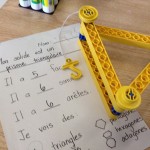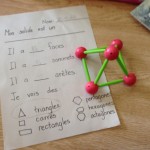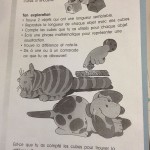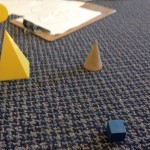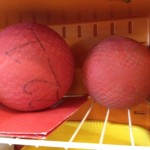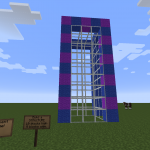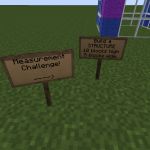This project expanded our use of math learning centres to enhance student learning at the Grade 1 level. Two of the three classrooms are French Immersion. We focused on whole group and small group instruction and differentiated instruction.
To achieve this, we used manipulatives and a variety of activities to give students concrete experiences that were engaging, educational and relevant to their lived experiences.
We also explored how the use of technology, such as iPads, could be used to create engaging math experiences.
Team Members
Helen Lambert-Denis
Toronto District School Board
Steve Massa
Toronto District School Board
Liam O'Donnell
Toronto District School Board
Professional Learning Goals
1. Explore different ways of collaborating with colleagues to engage learners in a meaningful way that reflects their lived experiences.
2. To grow as educators in our use of technology, to differentiate instruction and connect with learners.
Activities and Resources
1. Three formal half-day meetings and several impromptu meetings to plan.
2. Purchased iPads and cases and geometric manipulatives.
3. Ran a variety of math centres in our classes.
Unexpected Challenges
Delays in receiving funding led us to limit our purchasing for the project. Also, some items were not in stock at the time we planned to purchase them.
Learning to navigate the TDSB system to purchase apps for iPads was more time-consuming than anticipated.
Developing effective methods to keep students accountable during the math centre activity.
Enhancing Student Learning and Development
The use of iPads during math engaged students who don’t always feel they are able to participate.
Students documenting their learning with photos led to rich class discussions and a review of vocabulary in a meaningful context (e.g., taking photos of 3D shapes in the classroom allowed the students to share their findings immediately).
Sharing
We have shared our learning through informal discussions with our teaching colleagues and formal discussions during our school-wide PLC meetings.
Project Evaluation
We feel our project was a success. As a team, we feel as though our goals of learning about using technology in the classroom were met.
It has been a great introduction to embedding technology into our math lessons and led to collaborations between teachers in the English and French streams at our school.
Going forward, we plan to continue using the iPads and the other resources we purchased in our math lessons. We also plan to continue sharing our experiences with our colleagues.
Resources Used
Diller, Debbie. Math Work Stations: Independent Learning You Can Count On, K-2. Stenhouse Publishers, Portland, Maine/Pembroke Publishers, Markham Ontario 2011.
Van De Walle, John A. Teaching Student-Centered Mathematics Grades K-3.
Interactions Cartes d’activitié. Les éditions de la Chenelière.
– cards that students can use at math centres.
– lists materials needed and gives ideas for exploration.
Useful Apps for the iPads:
Camera – taking pictures of shapes around the room
Geoboard for geometric shapes
Dragon Shapes by Lumio – tangrams
J’apprends à lire l’heure (would be better for slightly older students)
Minecraft pocket edition – can be used for measuring
Websites:
TVO kids
TFO
Resources Created
These resources will open in your browser in a new tab, or be downloaded to your computer.


